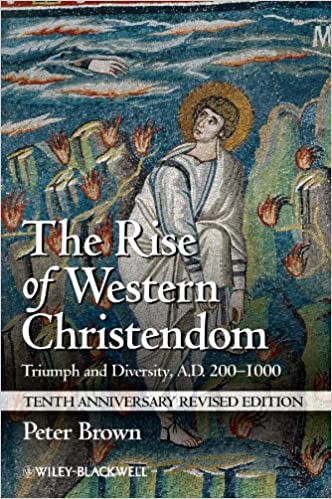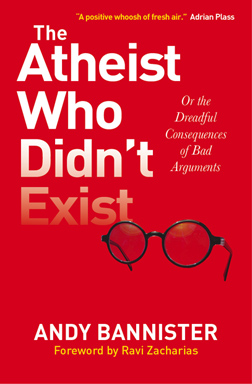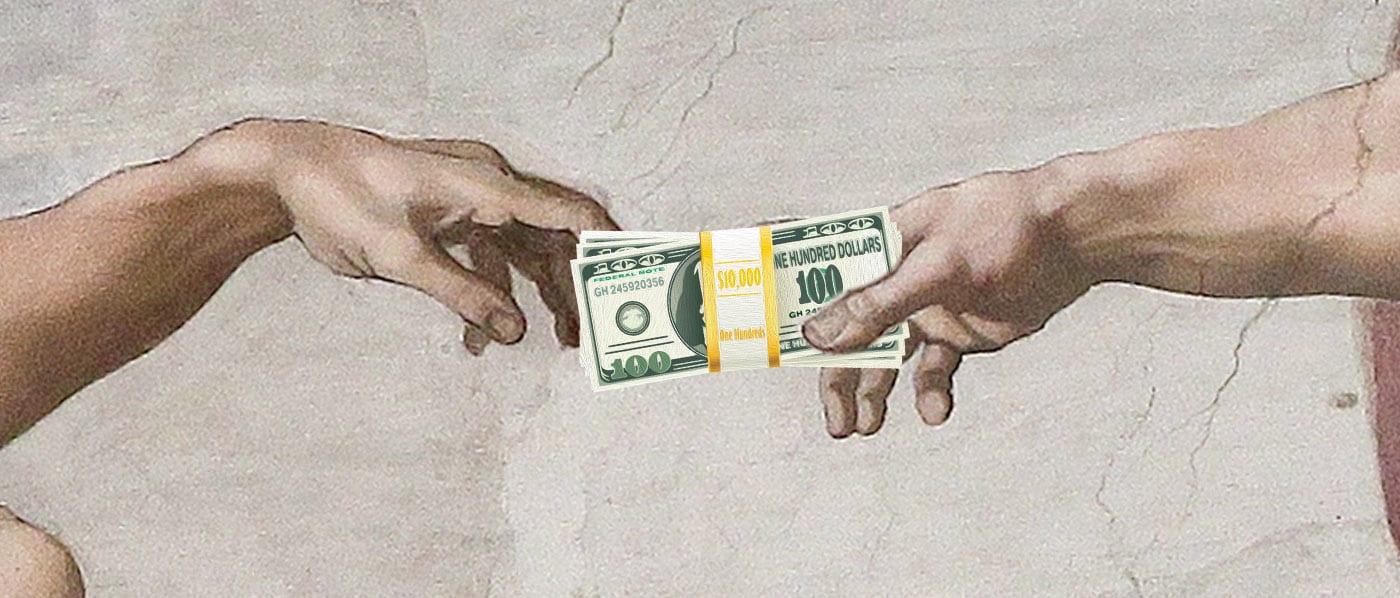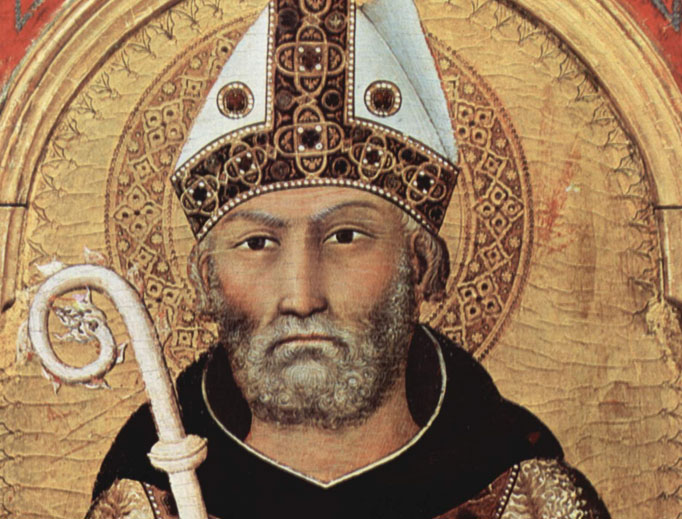If you are interested in Western Christianity between the dates of 200-1000, you’ve just found the perfect book. If you are not interested in this mostly unknown part of history, then what’s the matter with you?!
- The Tenacity of Paganism — According to Brown, there was never a clean break from Paganism to monotheism. Instead, Paganism came to be thought of as a second-rate story for backward and illiterate people. “Pagan” means countryfolk (75). Christianity was not primarily a religion of the poor and disenfranchised. On the contrary, wealthy and influential people embraced the new faith more readily in cities, which led to the Christianizing of cities at a far quicker rate than rural areas. There is very little on record as far as pagan martyrs after Christianity ascended to power. Paganism wasn’t the last remnants of a former infestation that needed to be stamped out. Christianity became the ribeye steak among the general population, and Paganism was Chicken Mcnuggets! One could continue munching on the Mcnuggets if they wanted to but why? There was steak to be had! Pockets of Mcnugget chomping pagans continued to exist for centuries.
- Mixed bag micro-Christianity — Christianity didn’t grow from the top down, it grew from house to house, and village to village without any overarching system. The result was thousands of “roll your own at home” variations of Christianity. Like the countless Micro brewery’s that cover the landscape of the Pacific Northwest, each with their own label, taste and texture, so too developed Micro-Christianity all over Western Europe. Brown describes the variety as “individual beads on a necklace.” One of Christianity’s most effective means of spreading was through slavery. Christians captured and pressed into slavery continued to spread their message of hope. The Christian’s ability to overcome the burden of his bonds through belief led many captors to salvation. This happened in Iceland, Ireland, and the Scandinavian countries. Slaves didn’t always have their theology straight which contributed to the diversity of Christianity. Also, many of these people groups were willing to accept Christianity, but only with significant exceptions. Ireland embraced the Jesus way but embraced the Old Testament practices of polygamy and tribal violence much to the consternation of missionaries stationed there. Iceland decided to convert on masse one night as a strategy to unify their country. They, however, doggedly clung to their practice of female infanticide and the eating of horseflesh, both practices which the Christian church condemned.
- Golden Age of Peasantry — With the fall of the Western Roman Empire, many have thought that Europe plunged into a dark era of misery and ignorance. Perhaps it was a little tougher for the elites of society, but for the peasants, it was a near utopian era! “No longer policed and bullied every year to pay taxes, the peasantry slipped quietly out of the control of their landlords. Rents fell as taxes vanished… Less of their agrarian surplus was taken from them than at any other time in the history of Europe…It was only until the 8th and 9th centuries that the normal life of grinding extortion resumed for the peasant classes” (31)
- The game changers that led to Christianity’s dominance
- Equality — “High and low men and women met as equal subjects, now, to the overruling law of one God….If a poor man or a destitute stranger should come in, do thou, O bishop, with all thy heart provide a place for them even if thou hadst to sit upon the ground.” (64-65) The gatherings had order, to be sure, but the development of equality and even the giving of preferential treatment to the lower classes was something entirely new.
- Sin and it’s divine and communal solution – Except for Judaism, the universal human condition of sin, had no real identity, it wasn’t a mainstream idea. People didn’t think in those terms. But when the Christians brought it forward, it just made sense, “oh so that’s what that is.” So also did the hope for deliverance in Christ. The battle against sin was not a solo endeavour. Sin was the one thing the Christian community was committed to eradicating. This new way filled people with understanding, home, and a community committed to helping each other get better.
- Mobilization of wealth. From the very beginning giving was a significant tenant of the Christian faith. Wealth could be amassed quickly to help the poor and make a real difference in the world. This generosity shocked the Pagans but also won them over. It wasn’t until the 9th or 10th century that giving to the church became mandatory. Forced charity turned out to be a bad idea. But isn’t that what taxes are?
- God has come near — The old story of Paganism, was worn out, it wasn’t helpful. The ancient tale that emphasized the unbridgeable chasm between the human world and the divine world had lived its little time. The steep upward glimpse of distant, ruthless and unreachable deities was replaced with a much better story, A story that stood Paganism on its head. As Pope Leo said, “It is far less amazing that human beings should progress upwards towards God than that God should have come down to the human level.” (117) In the Christian story, God, out of love, came to rescue the human. A concept utterly foreign to Pagan thought, but it came like refreshing rain on parched earth.
- When the Christian story shifts from “what” to “how” the fights begin. It was the wonder of what God had done in Christ Jesus that filled the Roman world with hope and joy and led to such an incredible conversion rate. Eventually, over time, converts began to wonder precisely how God’s son had invaded the earth. When the focus shifted from what to how, and different answers were arrived at, the gloves came off, and the fights began. They haven’t stopped either, fortunately, over the centuries they’ve become less bloody.
- Monophysite mayhem. — Did Jesus have one nature or two? The “official” church decided at Chalcedon that the answer was two. Jesus was both 100% human in nature and 100% divine in nature. If he had only one nature, he could neither be truly divine or human, and that made for a lousy saviour — But the “mono” (one) “physite” (nature) people weren’t buying it. To them, it made no sense to say someone had two natures. It wasn’t possible. Eventually, the Monophysite’s were severely persecuted, to such a degree, that they welcomed Islamic invasion when it came to their territories in the 600’s! I wish it could have been possible to remain amazed at the “what” and less concerned about the “how.” But that wish is impossible. It’s human nature to understand, sadly, violence was the result of the quest to understand the how of the incarnation The message of life, brought death.
- Christianity’s tumultuous relationship with Icons In the East, Christians killed each other over the issue. Icons were supposed to be helpful tools aiding in the worship of Jesus, but for many, they became more than that. Pictures of the saints, relics from ancients days, and whatever tangible bits of the past gradually became elevated to the point where Christian’s were coming dangerously close to worshiping the images. For many, the thought of living life without an Icon present became unthinkable. “If only I shall see his likeness, I shall be saved.” Once some key battles were lost, and the Roman empire of the East began to shrink. Byzantines began to wonder if it might be God’s judgment for Idolatry. The “Iconoclast” (Icon Breakers) faction was born. Before long, they found a sympathetic Emperor or two, and the smashing began. Iconophiles (Icon lovers) responded by hiding their icons, and trying to smash Iconoclasts! Iconophiles also attempted to sully the reputation of Iconoclasts by linking them with Islam, which tolerates no images whatsoever.
- Emperors being emperors, only one kind of Christianity will do. Christian or not, violence is what emperors do. Whether Justinian in the 5th, Clovis in the 7th or Charlemagne in the 9th. Blood flowed freely and ones religious affiliation seems to have made little difference. Was Charlemagne’s beheading of 4500 Saxon captives in his conquest a bit much? Not really, all in a days work for an emperor! What about his Christian conscience? He doesn’t seem to have struggled with it. By the 9th century, the golden age of peasantry was over, and powerful kingdoms were emerging in the West, of which Charlemagne’s was the strongest. His Frankish Empire decided to go on a mission to correct the false teachings of the countless “micro-Christiandoms” that had sprung up all over continental Europe. The Pagan Saxons had been intermingling with Christian Franks for centuries, creating a “bad brew” of Christianity. For the sake of control, it was time to clarify the ingredients and make sure to get the Christian recipe just right. The monks who had long worked in these brackish waters between Christianity and Paganism protested the violence strongly, “We must preach and persuade” they said. To which Charlemagne responded, “I’ll preach with an iron tongue,” and so he did. In Ireland and England, the need for precision to the “right” type of Christianity also became a bit extreme. Wilfrid, for example, freaked out that the monks didn’t have the proper hairstyles and that the calendar of Holydays wasn’t as it should be. He had been to Rome and learned the way more perfectly. To any Irishman who objected to his changes, he reminded them of their place in the hierarchy of Christianity. They were but a “pimple on the chin of the earth!”
- Repentance gone wild. Augustine believed that penance was a frame of mind. It was a lifelong process, because sin, also, was a lifelong companion of the Christian. Pope Gregory and the leaders that followed him made sin and its abolishment from one’s life the absolute focal point for the Christian. In some ways, with this over-focus on sin, God became distant again. Attaining God’s presence in heaven was the goal, and every Christian became responsible to abolish his sins to accomplish this goal. Books of long lists were written, describing in blushing detail every imaginable sin, with the corresponding prescription of penance that needed to be carried out, to be purged from the stain. Priest’s came to function as extremely powerful “doctors” who held the cure for sin. Terror of hell and fear of death without giving doing penance replaced the joy and hope. Mass, confession, and penance became the key to heaven, and the priest’s held those keys.
- How Islam swallowed up Christianity in the East In the 6th century, modern-day Turkey, Syria, Lebanon, parts of Iraq, parts of Iran, Egypt, North Africa, and Spain were populated predominantly by Christians who were part of a mostly Christian empire. Within 100 years all these lands had been conquered with the sword of Islam, and the Christians who remained within the borders of this expanding Islamic empire were slowly but surely converting to Islam. How did this happen?
- Timing is everything: The Byzantines and the Persians had beat each other up so badly that when the Arabs came round, there wasn’t much fight left in either of them.
- Commitment is everything: “There was nothing strange in the idea that warfare was blessed by God, but within Arabia itself, the sheer aggression of the followers of Muhammad changed the rules of the game.” (293) Islam was convinced, as was Christianity, that they alone represented the culmination of God’s purposes on earth, it’s just that the Muslims had no limitations whatsoever, coming from their theology, that would prevent them from inheriting the earth through whatever means necessary.
- At least it’s not Paganism: Many Christians of that era viewed Islam as an “in-between” religion. It was a religion of Abraham. It even affirmed a lot of Christian teachings. Many Christians managed to convince themselves that Islam was simply a more perfected version of Christianity and so they converted.
- More freedom under Islam: Islamic rule was not so bad for Christians at first, especially for un-orthodox Christians. In the Byzantine empire, they were hounded, in the Islamic one as long as they paid their extra taxes for being non-muslim they were free to believe what they wanted. “Islam rested as lightly as a mist along the contours of what had remained a largely Christians landscape.” Of course, all that would change, but it was suitable for a while. In the end, it was the steady increase of taxes, the unifying nature of the Arabic language and increasingly better opportunities reserved only Muslims that led to the Islamification of the east.
- Gregory vs. Theodore in Bible Study — Western Christians studied their Bibles like Gregory for the first several hundred years. For Gregory, the Bible was a great encoded message sent by God to cast fire into the heart. It echoed with the mighty whisper of God. It was for this “whisper” that the devout Christian should listen, reading the Bible, as it were, “between the lines” – paying less attention to the text itself than to a message from God which lay behind the text. Theodore was not impressed with the Western scholars he found when he finally escaped encroaching Islam and moved from Antioch all the way West to Britain. For Theodore, the Bible was first and foremost a challenging text. Its different books had been written at specific times, by specific authors. One had first to discover exactly what these authors meant before one could go on to draw upon the Bible to nourish higher flights of contemplation. Modern Biblical scholarship went the way of Theodore, but the Gregorys meditative approach dominated the first 1000 years of Western Christianity. Theodore became immensely popular. Being from the Middle East, he could answer all the contextual questions Western Scholars from Britain could never even have hoped to answer.
- Moving into a neighborhood — Monks moved into pagan places and built monasteries — Christianization often took place, on the ground, through a wide penumbra of half participants who had gathered around a monastery. (375) Monasteries were not closed-off areas reserved only for quiet contemplation. They became centres of learning and commerce, and as a result, Christianization.




